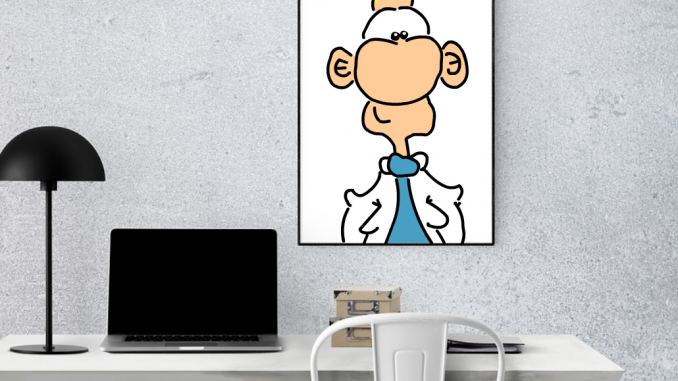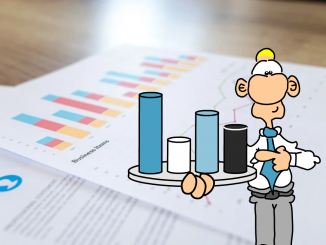
When preparing for the EQE, it is very useful to prepare your own templates, so that you can save time during the exam and do not need to think about the wording or the parts that you have to mention.
If you have time to practice on some previous exams using your own templates, even better! (Note for non-native EN/DE/FR speaker candidates: this way, you can also memorise some useful phrases beforehand.)
Some useful tips regarding the e-EQE in 2021:
- Even though the EQE is electronic, you will not be able to copy sentences from your template, since the lockdown browser of the WISEflow system will not allow you to open any of your files.
- Therefore, do not forget to print your templates a few days before the exam. By having the printed templates with you on the day of the exam, you will have one less thing to worry about and can focus on the Paper.
- If it makes writing easier for you, you can stick the template to your monitor.
- You cannot hand in any hand-written materials.
- Fill your tables on paper and write your answer directly in WISEflow. If you have to do any time limit calculations, do them on computer right away.
I am sharing the templates that I prepared for myself below.
Paper A
(We can only use a template for the description part, which is only worth 10-15 marks. However, those marks are relatively simple to get, and with a good template, it does not take too long to write it.)
Technical field
The present invention relates to a … (e.g. … product). The invention also relates to the … (e.g. manufacturing) process for such a … product.
Background (Definitions and general prior art described in the client’s letter, short description of D1 and D2)
It is known that…
A known disadvantage of the prior art is…
Document D1 discloses…
The disadvantage of D1 is…
Document D2 discloses…
The disadvantage of D2 is…
The present invention thus aims at improving…
Summary
It is therefore the object of the invention to provide a … according to claim 1, which ….
Another aspect of the invention is… (mention the subject matter of the other independent claims)
According to these independent claims… (more details, e.g. the characterizing part and explaining how the technical problem is solved)
The advantage offered by the invention is…
Further advantageous aspects of the invention are covered by dependent claims. (If you have time, you can write more about the dependent claims as well.)
Paper B
This letter is in response to the communication under Art. 94(3) EPC.
Find enclosed a set of amended claims.
Basis for amendments – Art.123(2) EPC
Claim 1:
Amended claim 1 comprises the features of claim 1 as originally filed and the additional features of claims X and Y as originally filed.
Claim 1 has been amended to define that …
Basis for this amendment is found in …, and thus does not add subject matter against Art.123(2) EPC.
In case of deletion from a claim: The feature “…” has been deleted from claim X. This amendment is allowable in the sense of the Guidelines H-V, 3.1 (three point essentiality test).
- In this regard, the feature is not explained as essential in the disclosure of the application, as § X states that …
- Further, this feature is not, as such, indispensable for the function of the invention in light of the technical problem the invention serves to solve, because …
- Also the removal of this feature requires no real modification of other features to compensate for the change. The remaining features of the claim are unchanged, and …
Thus the removal of the feature passes the three point essentiality test of GL H-V, 3.1.
Dependent claims:
Claim 2, which corresponds to original claim 2, has been amended to … Basis for this amendment is found in §X of the application as originally filed.
Claim 3, which is based on claim 3 as filed, has been clarified to … Further arguments as to why the claim is now clear are marked as discussed under “Clarity”.
Claim 4, which corresponds to original claim 3, has been amended to … Basis for this amendment is found in §X of the application as originally filed.
Claim 5 has been renumbered as claim … and the dependency was adapted.
Accordingly, all amended claims are in conformity with Art.123(2) EPC.
Unity – Art.82 EPC
If necessary, argue why there are two independent claims from the same category. (R.43(2)(a)/(b)/(c) EPC)
Consequently, the requirements of both Art. 82 EPC (unity) and Rule 43(2) EPC are fulfilled.
Clarity – Art.84 EPC
Under point X of the communication the examining division raises the that the …
This objection is overcome by the wording of the amended claim such that …
It is respectfully submitted that the amended set of claims is clear within the meaning of Article 84 EPC.
Novelty – Art.54 EPC
Claim 1:
According to independent claim 1 as amended
Document D1 does not disclose a …
Document D2 does not disclose a …
Document D3 does not disclose a …
The conclusion is, therefore, that neither the disclosure of D1, nor the disclosure of D2 or D3 comprises all features set out in the amended claim 1.
It follows that the subject-matter of claim 1 is novel within the meaning of Article 54 EPC.
Independent claim X:
Document D1 does not disclose a …
Document D2 does not disclose a …
Document D3 does not disclose a …
The conclusion is, therefore, that neither the disclosure of D1, nor the disclosure of D2 or D3 comprises all features set out in the amended claim X.
It follows that the subject-matter of claim X is novel within the meaning of Article 54 EPC.
Dependent claims Y to Z are novel by merit of dependency on claim 1.
Similarly, claim W is novel, because it depends on independent claim X.
Inventive step – Art.56 EPC
(Do not miss any steps of Problem solution approach in your inventive step argument, as this is the part is worth marks in Paper B!)
Claim 1 relates to …
Dx is the closest prior art (CPA) because it relates to the same purpose of … and is from the same technical field of … (You can also discuss all documents shortly and then conclude why Dx is the closest prior art, e.g. “Dx is the only document disclosing…”)
Dx discloses …
Claim 1 differs from Dx in that …
The effect of this feature is … (Cite the relevant paragraph from the patent application.)
This solves the technical problem of …
The solution according to the invention is not obvious to the skilled person for the following reasons:
– Arguments for CPA on its own: … (Argue why the person skilled in the art would not arrive at the claimed invention on the basis of the closest prior art taken on its own.)
– Arguments for CPA+D2:
Starting from D1 and considering the technical problem set out above, the skilled person would (not) turn to document D2, since D2 relates to…
D2 does not contain any specific disclosure regarding the …
When combining the teachings of documents D1 and D2, the skilled person would still not arrive at the present invention, since there is no suggestions that … is capable of solving the technical problem.
(Argue why the person skilled in the art would not
combine the documents in order to arrive at the claimed invention. Describe how the subject-matter resulting from such a combination is different from the claimed invention.)
– Arguments for CPA+D3:
For these reasons, it is not obvious for the skilled person to arrive at the subject-matter of independent claim 1 from the technical teaching of Dx, taken as such or in combination with D2 or D3. Thus, claim 1 is in conformity with Article 56 EPC.
Claim X relates to … (Do the same steps for any other independent claims regarding inventive step. The independent claims may have different CPA!)
The dependent claims fulfil the requirements of inventive step by virtue of their dependence on claim 1 and claim X.
Paper C
Patent opposed: Annex 1
Patent proprietor:
Opponent:
Grounds for opposition: Art.100(a) novelty, inventive step, Art.100(c) added subject matter
Extent of opposition: all claims
The opposition fee has been paid online.
Name of representative: (Add the name from the client’s letter, do not use yours.)
Signature: (Again, not your signature.)
Effective dates – Art.89 EPC
Claims W, X: Date of priority
Priority of these claims were validly filed, since it was filed within 12 months, by the same applicant, for the same invention and priority is claimed from the first application. It is the same invention, since the priority document included these claims. (Art.87(1) EPC)
Claim Y, Z: Date of filing, since the subject matter of these claims were not included in the priority document, so the claimed priority is not valid for these claims.
Documents
A1: Patent opposed
A2, A3, A5 and A6: Art.54(2) prior art documents for claims …, since these documents were published before the effective date of these claims.
A4: Art.54(3) prior art document for claims …, since A4 is a European patent appl. with earlier effective date and later publication date than the effective date of these claims.
Grounds
1. Claim 1 is not novel over Ax under Art.54(2)/Art.54(3) EPC – Art.100(a) EPC
Reasons for lack of novelty:
Ax discloses … (You need to always cite the relevant paragraphs from Ax and explain why it is the same, where not evident, for example argue why the range is not novel.)
Thus, Ax discloses all the features of claim 1, so the subject matter of this claim is not novel.
2. The subject matter of claim 2 extends beyond the content of the application as filed under Art.123(2) EPC – Art.100(c) EPC
Claim 2 was added after filing, without having a basis for the amendment in the application. There is no direct and unambiguous teaching in the application as filed for a device/method which is …
Claim 2 thus extends beyond the content of the application as filed under Article 100(c) EPC.
(In case of an added subject matter according to Art.76(1), your text will have to be slightly different, such as the content of the application extends beyond the content of the earlier application as filed.)
3. Claim 3 – dependent on claim 1 – is not inventive over Ax+Ay under Art.56. – Art.100(a) EPC
Claim 3 relates to …
Ax is the closest prior art (CPA) because it relates to the same purpose of … and is from the same technical field of … (Also cite relevant paragraph from the CPA.)
Ax discloses …
Claim 3 differs from Ax in that …
The effect of this feature is … (Always cite the relevant paragraph from A1.)
This solves the technical problem of …
Reasons for reading D2:
Ay (D2) from the same/neighbouring technical field of … provides a solution to this problem. (Cite the relevant paragraph from CPA.)
Ay discloses … (describe how Ay solves the technical problem)
Describe why (what is the incentive) and how skilled person would combine the Ax (CPA) and Ay (D2).
The skilled person would thus only require an obvious modification of … and would arrive at the additional features of claim 3 without exercising any inventive skill.
Accordingly, the subject matter of claim 3 does not involve an inventive step in view of Ax+Ay.
4. Claim 4 – dependent on claim 1 – is not inventive over Ax+Ay under Art.56.
Claim 4 relates to …
Ay is the closest prior art because it relates to the same purpose of … and is from the same technical field of … (Also cite relevant paragraph from the CPA.)
Ay discloses …
Claim 4 differs from Ay in that … and in that …
The effect of the first difference is … (Always cite the relevant paragraph from A1.)
The effect of the second difference is … (Always cite the relevant paragraph from A1.)
The first and second differences do not mutually influence each other and have no synergistic effect. They solve two separate partial problems and can therefore be treated separately, Guidelines, G, VII, 5.2.
The first difference solves the first partial objective technical problem of … The second difference solves the second partial objective technical problem of …
First partial problem:
Ax (D2) from the same/neighbouring technical field of … provides a solution to this problem. (Cite the relevant paragraph from CPA.)
Ax discloses … (describe how Ax solves the technical problem)
Describe why (what is the incentive) and how skilled person would combine the Ay (CPA) and Ax (D2).
Second partial problem:
Az (D2) from the same/neighbouring technical field of … provides a solution to this problem. (Cite the relevant paragraph from CPA.)
Az discloses … (describe how Az solves the technical problem)
Describe why (what is the incentive) and how skilled person would combine the Ay (CPA) and Az (D2).
Therefore, the skilled person, when faced with the technical problem, would arrive at claim 4 without exercising any inventive skill. Accordingly, the subject matter of claim 4 does not involve an inventive step in view of Ay+Ax+Az.
(Using one of these grounds and these template sentences, write an attack against each claim (each alternative in the claims)).
Paper D2
(The below template is very useful when writing about the situation-as-is part.)
EP-Y
It is the earliest application disclosing subject matter X.
(Other possible options: It is XY’s first application disclosing subject matter X.)
(If the application is dead, it is sufficient to discuss these first two points.)
1. Status: pending, deemed withdrawn, granted, etc.
2. Effective date of the claims:
Claim 1:
Claim 2:
Also discuss: Was priority validly claimed? Why? (4 things to check: 1. same applicant, 2. within 12 months, 3. same invention, 4. is it the first application?)
Example sentences: Effective date is the filing date, because no priority was claimed. OR: Filing date, since priority was not validly claimed for this claim, because… OR: Priority date, since priority was validly filed, because…
3. Prior art (mention all prior art documents, not only novelty-destroying applications):
”PCT-X” is an Art.54(2) prior art document, since it was published before the effective date of both claims.
”EP-X” is an Art.54(3) prior art document, since it is also a European patent application, and it was filed before but published after the effective date of both claims.
4. Novelty:
Claim 1:
Claim 2:
Example sentences: Novel, because it is the first application disclosing subject matter of the claim. OR: Novel, because there is no prior art disclosing subject matter of the claim. OR: Not novel, since EP-X also discloses the subject matter of the claim.
5. Inventive step (only discuss inventive step if the claim is novel):
Claim 1:
Claim 2:
Example sentences: Inventive, because it has the technical effect of: … (quote the effect from the letter).
6. Conclusion (patentability etc.):
Claim 1:
Claim 2:
Example: Not clear / not enabled / added subject matter
Therefore, claim 1 can be validly granted and give right to… OR: claim 1 cannot be validly granted…
Two extra steps if necessary:
7. Exploitation possibilities
XY can have right in the EPC states where validated, can stop others from using/selling/manufacturing/marketing…
8. Can new application be filed for the subject matter in the important territories for the client?
(Mention if we are still in the priority year and further applications can be filed. For example, if client needs patent in the US –> mention that it can still be protected in the US by filing a patent application in the US in the priority year.)
Repeat this for every application (or subject matter).
Good luck!
I hope you will find the above templates helpful. I wish you all the energy for this remaining period until the exams in March, and good luck with the EQE!
Feel free to read my concise summary about all the Papers:
https://www.fillun.com/eqe-blog/paper-a-basics
https://www.fillun.com/eqe-blog/paper-b-basics
https://www.fillun.com/eqe-blog/paper-c-basics
https://www.fillun.com/eqe-blog/paper-d-basics



